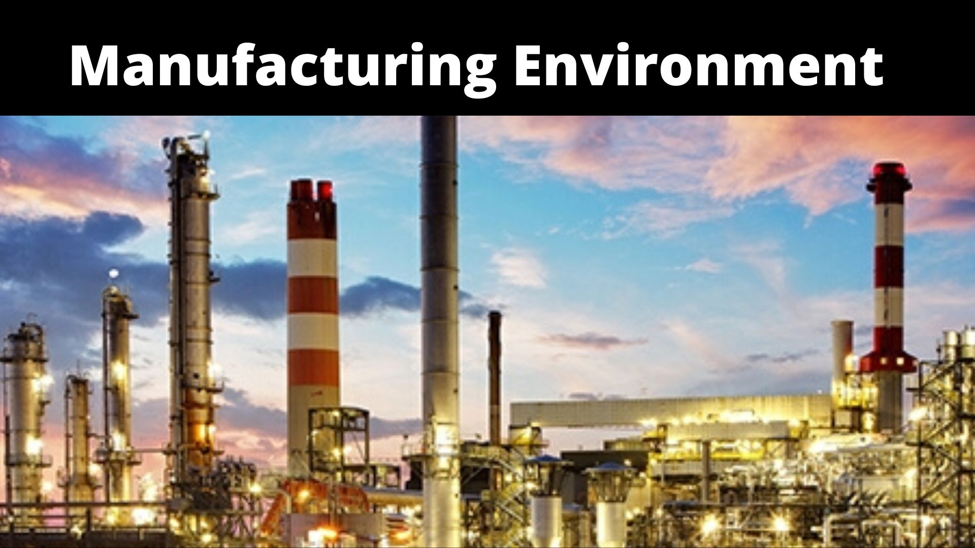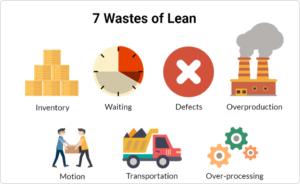Latest News
Lean environment, The 7 Kinds of waste, and intro to KAIZEN

To sustain the target growth rate in a challenging and competitive environment, businesses need to deliver the maximum value to their esteemed customers. Different businesses come across different challenges and problems that they need to count down at the earliest. Lean theory implementation is recognized worldwide for being highly effective to counter down most of the competitive challenges and in-house problems in different verticals like R&D, production, inventory, supply chain, support, etc.
Lean environment development, widely accepted across the organization, is a multi-stage process that needs a professionally structured goal-oriented strategy and implementation plan; here comes the role of Lean – Kaizen consulting company.
What is a Lean Manufacturing Environment?
Lean manufacturing is a professionally designed methodology focused on minimizing the waste in manufacturing processes while maximizing productivity at each stage. The lean manufacturing approach is the perfect blend of different theories; Kaizen is the most influential contributor to Lean environment development. Practicing Lean is adhered to to make smarter and more informed quick decisions.

In a Lean environment, organizations focus on eliminating the waste to deliver the maximum value that the target customers’ segment and stakeholders expect while keeping an eye upon the planned profitability. The lean approach doesn’t recommend a strict and rigid set of processes, practices, rules or tools; instead, it is lightweight and flexible; therefore, it can be applied to any size business for enhanced performance resulting in better quality, greater customer’s satisfaction improved brand image and profitability. Although creating a Lean environment is a lot of intensive efforts but the understanding of 7 Lean principles makes the complete process feasible and hassle-free.
| S.N. | Lean Principles | Focus Area |
| 1. | Eliminate Waste | Eliminate anything that doesn’t add value for the customer |
| 2. | Build Quality | Incremental quality development with constant feedback and combining the skills
|
| 3. | Create Knowledge
| Knowledge sharing and training |
| 4. | Deliver fast | Thinking far for future in advance
|
| 5. | Defer Commitment | Demonstrate the responsibility by keeping the options for improvement open |
| 6. | Respect People | Communicate proactively and effectively to settle the issues at the earliest
|
| 7. | Optimize | Visualize and optimize the organizational value stream |
Eliminating waste is the key challenge in creating a Lean environment in Kaizen Consulting Firms an organization because most of the wastes are present in hidden form. Seven wastes are commonly identified in manufacturing businesses.
Seven Wastes of Lean Manufacturing & their Impacts on Lean environment
Overproduction Waste: It is the most serious of the wastes often identified in manufacturer units. Stocking too much ready-to-supply product adds costs, storage issues, wasted materials, more capital invested in useless inventory. More raw materials are consumed before these should be. Overproduction creates serious environmental issues also.
Inventory Waste: Unprocessed inventory is a waste holding the capital without a purpose that affects the progress of other tasks that need capital. The key focus areas to control inventory waste are waste of transporting the inventory, containers storing inventory, lighting expenses for storage space, etc. In addition, excess inventory hides the wastes of overproduction and increases the damage cost and obsolete inventory.
Movement Waste: Movement of a person or good costs to the organization; therefore, Lean advocates to minimize it. Each excess movement increases the production cost and production time. The movement waste often results in additional wear and tear of machines, major depreciation, the low performance of workers and health issues, etc.
Defects Waste: Defects are the deviations from the standards from the customer’s and organization’s perspective. Defective products, when e replaced, incur a heavy cost in the form of complex paperwork, replacement, rejection, excess human labor, lowered brand repute, more material consumption, etc.
Over-processing Waste: Over-processing waste means the processes in complete or in part that is unnecessary; for example, painting a hidden area like other exposed and regularly used areas. Over-processing waste costs the organization in the form of the increased cost of maintenance, parts, labor, and raw materials. Over-processing makes the tasks more complicated, costlier, and time-consuming.
Waiting Waste: Waiting in between the processes is the very common waste in most of the manufacturing units. It occurs because of a lack of planning, lack of coordination, improper workflow, and process optimization. It affects the organization’s profitability because of increased man-hours for being unproductive and the useless cost of lighting, heating or cooling for the waiting period.
Transport Waste: Transport is the critical aspect of the supply chain within and out of the organization. The transport cost is directly associated with the cost of produced and supplied products. Lean environment development takes care of minimizing the transportation cost by strategically planning the receiving and delivery points.
Introduction of Kaizen to Support Lean Environment:
Kaizen is at the core of lean manufacturing. Lean and Kaizen are closely associated. Lean eliminates the wastes to boost efficiency while Kaizen supports continuous improvement. Consistent improvement to deliver better value to customers at the right price is the only way for the businesses to achieve and sustain the target growth rate. Under the Kaizen approach, employees at all levels work as a team for the common goal of regular and incremental improvements. Kaizen guides for using the collective talents within the organization for achieving the better than the best of today.
Kaizen implementation revolves around two aspects – plan and philosophy. Kaizen’s plan is about organizing the planned events for improvements in specific areas involving all the concerned employees. Kaizen philosophy is about developing a culture that encourages the employees to be actively engaged in suggesting and implementing the improvement measures. Kaizen implementation goes through a PDCA (Plan, Do, Check, and Act) cycle that includes:
- Set the goals and provide support
- Review the prevailing parameters and plan for further improvement
- Implement a plan for improvement
- Review the outcome and identify what didn’t work
- Document the results to plan for follow-ups
Kaizen is an Engine for Successful Lean Implementation
kaizen is a “prerequisite for Lean introduction” because it provides the initial stage jump-start, powerful momentum, organizational learning, employee engagement, sustainable functional improvements. The core concept of Lean is a continuous improvement by minimizing the waste, while the Kaizen approach also echoes the same. Massive changes take place when Lean methodology meets with Kaizen. To let the changes take place smoothly without harming the current performance, businesses need to outsource Kaizen consulting services. Lean Kaizen consultant guides the businesses in achieving savings and increasing the profits by almost 25% by eliminating the waste and process improvement.
Concluding Note
Lean Kaizen deployment has become a must for businesses to remain in the race and survive in a highly competitive market. According to the survey reports, the involvement of the Lean-Kaizen consultancy company helps the businesses to reduce the costs by 30%, cut down the inventory by 90%, improve employees’ productivity by 100% and reduce the rejections by 50%. The key role for the management is to provide just the support – employees’ empowerment with the freedom to improve the performance through their innovative concepts delivers high.
Sebastian was born and raised in the busy city of Abbottabad. As a journalist, Saad Mushtaq has contributed to many online publications including the PAK Today and the Huffing Post. In regards to academics, Saad Mushtaq earned a degree in business from the Abbottabad UST, Havelian. Saad Mushtaq follows the money and covers all aspects of emerging tech here at The Hear Up.Thanks










